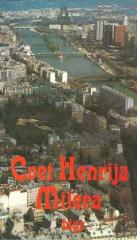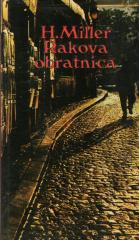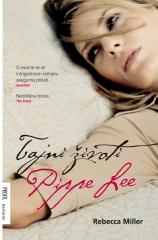
Ružičasto raspeće II: Plexus
"Plexus" Henryja Millera dio je trilogije "Ružićasto raspeće" u kojoj se, u manjem intenzitetu nego li u njegovim najpoznatijim djelima objavljenim tridesetih godina u Parizu, sublimira njegov bunt protiv učmale i licemjerne Amerike.
Millerovi romani su bili zabranjeni u Americi gotovo trideset godina, što mu je osiguralo "underground" reputaciju sve dok Vrhovni sud SAD-a 1964. nije odbacio optužbe Državnog suda o opscenosti. Upravo su ova djela u američkoj književnosti započela otvaranje prema seksualnim temama, oslobađajući ih pravnih i društvenih ograničenja.
Henry Miller (New York 1891. - Pacific Palisades, Kalifornija 1980.) do tridesete godine objavio je nekoliko ogleda i kratkih priča po američkim časopisima. Nakon niza različitih poslova u New Yorku, 1930. odlazi u Pariz gdje godinu dana živi u neimaštini. Zatim dobiva posao lektora u pariškom izdanju dnevnika "The Chicago Tribune", zahvaljujući prijatelju Alfredu Perlesu pod čijim imenom objavljuje i nekoliko članaka. Ozbiljno počinje pisati s gotovo četrdeset godina. Njegovi romani, osobito Rakova obratnica (1934), u Americi su izazvali mnogo polemika, pa čak i zabrana tako su romani "Crno proljeće" (1936) i "Jarčeva obratnica" (1936) bili zabranjeni gotovo trideset godina.
Godine 1940. Miller se vratio u SAD i nastanio u Kaliforniji, gdje je nastavio pisati i provocirati suvremeno američko društvo, njegove kulturne i moralne vrijednosti. Miller se bavio i slikarstvom - njegovi akvareli pohranjeni su u dva muzeja – "The Henry Miller Museum of Art" u japanskom gradu Omachi, te "The Henry Miller Art Museum" u kalifornijskom Big Suru. Opus Henryja Millera, gotovo u potpunosti autobiografskog karaktera, uvelike je utjecao na pisce beat generacije.
Nema primjeraka u ponudi
Poslednji primjerak je nedavno prodan.





